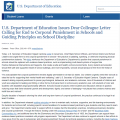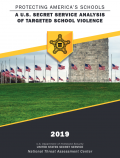Both positive supports and prevention services should be implemented throughout middle and high school. Strategies to promote positive supports and services during the middle school years are likely to positively impact students in their high school years. If there haven’t been effective prevention programs in middle school, then prevention or cessation programs must be available in high school.
Students ages 12–18 may be less interested in schoolwork, especially when under stress and or when family or work obligations reduce available time to focus on schoolwork. Although some students may compete vigorously for attention from teachers, they also may withdraw; resist authority; become disruptive or aggressive at home or in the classroom, which may manifest as bullying-type behavior; or begin to experiment with high-risk behaviors, such as alcohol or drug use.
A fundamental function of the initial middle level education movement was to facilitate young adolescents’ transition into high school. Research shows that students have an easier time disengaging during these transitions. In recent years, more and more middle schools are developing transition programs to address the particular needs of their students, whether it is related to the transition from middle to high school, or in-person to virtual learning.
Gruhn, W. T., & Douglass, H. R. (1947). The modern junior high school. New York: The Ronald Press Company.
Kovalenko, A. G., Abraham, C., Graham-Rowe, E., Levine, M., & O'Dwyer, S. (2020). What Works in Violence Prevention Among Young People?: A Systematic Review of Reviews. Trauma, violence & abuse, 1524838020939130. Advance online publication. https://doi.org/10.1177/1524838020939130
McEwin, C. K. (1998). Concepts of continuing importance. In R. David (Ed.), Moving forward from the past: Early writings and current reflections of middle school founders (pp. 35-39). Columbus, OH: National Middle School Association & Pittsburgh, PA: Pennsylvania Middle School Association.
Van Ryzin, M. J., & Roseth, C. J. (2018). Cooperative learning in middle school: A means to improve peer relations and reduce victimization, bullying, and related outcomes. Journal of Educational Psychology, 110(8), 1192–1201. https://doi.org/10.1037/edu0000265
Vars, G. F. (1998). You’ve come a long way, baby! In R. David (Ed.), Moving forward from the past:Early writings and current reflections of middle school founders (pp. 222-233). Columbus, OH: National Middle School Association & Pittsburgh, PA: Pennsylvania Middle School Association.
Wang, M.-T., & Holcombe, R. (2010). Adolescents’ Perceptions of School Environment, Engagement, and Academic Achievement in Middle School. American Educational Research Journal, 47(3), 633–662. https://doi.org/10.3102/0002831209361209







